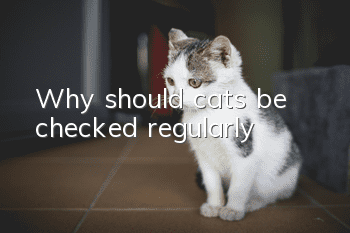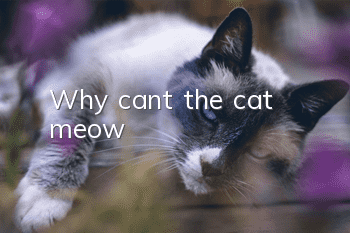Why should cats be checked regularly?

The internal metabolism of a cat’s body is a process of constant renewal and change. As the feeding progresses, there will be different manifestations. These manifestations may be that the body becomes stronger and develops well, or it may be symptoms of some potential diseases. These manifestations Early symptoms of the disease are often easily ignored, which may cause greater harm. Therefore, in order to avoid this situation, regular check-ups for cats are important.
Periodic examinations need to be determined at a certain time. Generally speaking, a 1-year-old pet cat is actually equivalent to a 7-year-old human being and needs to have a physical examination every year. When the pet cat enters adulthood, more physical examinations should be added. frequency. Like humans, when cats enter their senior years, they should undergo more frequent check-ups to prevent and treat some diseases in advance. The annual check-up of cats is not only about vaccines and disease treatment, but more importantly, monitoring and prevention. Cats are very good at hiding their discomfort, and many times owners only discover that their babies are behaving abnormally after their condition worsens. Regular annual inspections help parents and veterinarians detect potential problems as early as possible and carry out targeted intervention and prevention. For example, middle-aged adults will more or less have periodontal disease. If periodontal disease is allowed to progress, it will not only cause oral inflammation, but also cause serious problems in other organs of the body such as the heart, kidneys, and liver. As the saying goes, good teeth lead to a healthy body and delicious food!
So exactly how often should you see cats? Cats of different ages should follow different principles: Kittens under one year old may need to be vaccinated and neutered, so they may go to the veterinarian multiple times in the first year after entering the home. According to reports, if the cat has no disease in adulthood, an annual examination is enough; when the cat enters old age, the frequency of twice a year is recommended to ensure that the disease can be detected and treated as early as possible.
Annual urine tests and blood tests can detect early kidney disease, urinary tract infections, liver disease, diabetes, thyroid disease, and even cancer as early as possible. Starting to control and treat the disease at an early stage not only makes the treatment relatively cheap, but also has a high success rate for the baby's cure.
During the physical exam, your veterinarian will need a series of information about your cat’s health history. Don’t forget to provide information about abnormalities that may occur in your cat’s daily life, such as: coughing, diarrhea, eating more than usual, drinking more than normal, wheezing, scratching, urinating, vomiting, weight changes, etc. Depending on the environment where you live, your cat's lifestyle, age and other factors, your veterinarian may ask about your cat's contact with fleas, heartworms or intestinal parasites and develop a prevention plan for your cat. Please do this before you give your cat During the physical examination, be sure to note these precautions one by one to ensure the health of your cat.
Of course, we can go to the pet hospital for a detailed examination, or we can preliminary understand the cat’s physical condition at home, such as observing the mental state, observing the urine and feces, observing the eye hair, etc. The different diseases of catsThe specific symptoms of the disease are also different. For example, cats may experience lethargy, fever, runny nose, and sneezing when they have a cold; they may experience vomiting, diarrhea, abdominal pain, etc. when they have gastroenteritis. Therefore, in their free time, owners should learn more about the different symptoms of different cat diseases so that they can more accurately judge whether the cat is healthy.
- Why does cat poop smell so bad? Analysis of the reasons why cat poop smells so bad!
- Are Siamese cats suitable for novice owners?
- What should I do if my new cat keeps meowing at night?
- What does a cat stretch mean?
- Do all cats eat cat grass? (What are the benefits of cats eating cat grass?)
- When is the best age to neuter a Burmese cat?
- Jinjila has good looks and a good personality, so why is it not suitable for novices to raise?
- Is a male cat making a fuss or a female cat making a fuss?
- Why is the kitten pooping and vomiting?
- What are the symptoms of parasites in cats?



